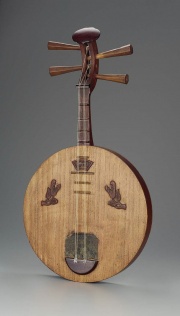Difference between revisions of "Paulownia wood"
Jump to navigation
Jump to search
m (Text replace - "== Authority ==" to "== Sources Checked for Data in Record ==") |
|||
| Line 15: | Line 15: | ||
|} | |} | ||
| − | == | + | ==Resources and Citations== |
* G.S.Brady, ''Materials Handbook'', McGraw-Hill Book Co., New York, 1971 Comment: p. 83 | * G.S.Brady, ''Materials Handbook'', McGraw-Hill Book Co., New York, 1971 Comment: p. 83 | ||
Revision as of 10:01, 27 September 2022
Description
A lightweight wood obtained from several species of Paulownia trees native to Asia. Paulownia trees produce a soft, coarse-grain wood that is similar to balsa. Even though the wood is lightweight, it is strong and warp resistant. Paulownia wood is used as a lightweight crating lumber and for floats. Wood from the Paulownia tomentosa tree, native to Japan, is used for scroll boxes.
Synonyms and Related Terms
Paulownia; kiri wood (Jap.); paulownia (Fr.); empress tree; princess tree; palownia (sp)
| Density | 14-19 ppcf |
|---|
Resources and Citations
- G.S.Brady, Materials Handbook, McGraw-Hill Book Co., New York, 1971 Comment: p. 83
- Marjorie Shelley, The Care and Handling of Art Objects, The Metropolitan Museum, New York, 1987
- The American Heritage Dictionary or Encarta, via Microsoft Bookshelf 98, Microsoft Corp., 1998
- Website address 1 Comment: Museum of Japanese Traditional Art Crafts at http://www.nihon-kogeikai.com/ (Jap. term)

